
5 Best Tiny Home Builders in Virginia
Downsizing the lifestyle by fitting it into 400–500 square feet is gaining popularity. Along with California and Georgia, the state of Virginia also accommodates tiny house movements. The state’s intervention by triggering designated laws and regulations is encouraging the rise of tiny house communities and tiny house builders in Virginia.
From a conventional point of view, the idea of a tiny home may seem crazy to some. In actuality, the tiny house dream is quite suitable for a modern lifestyle and comes with many benefits.
Benefits of having a tiny home
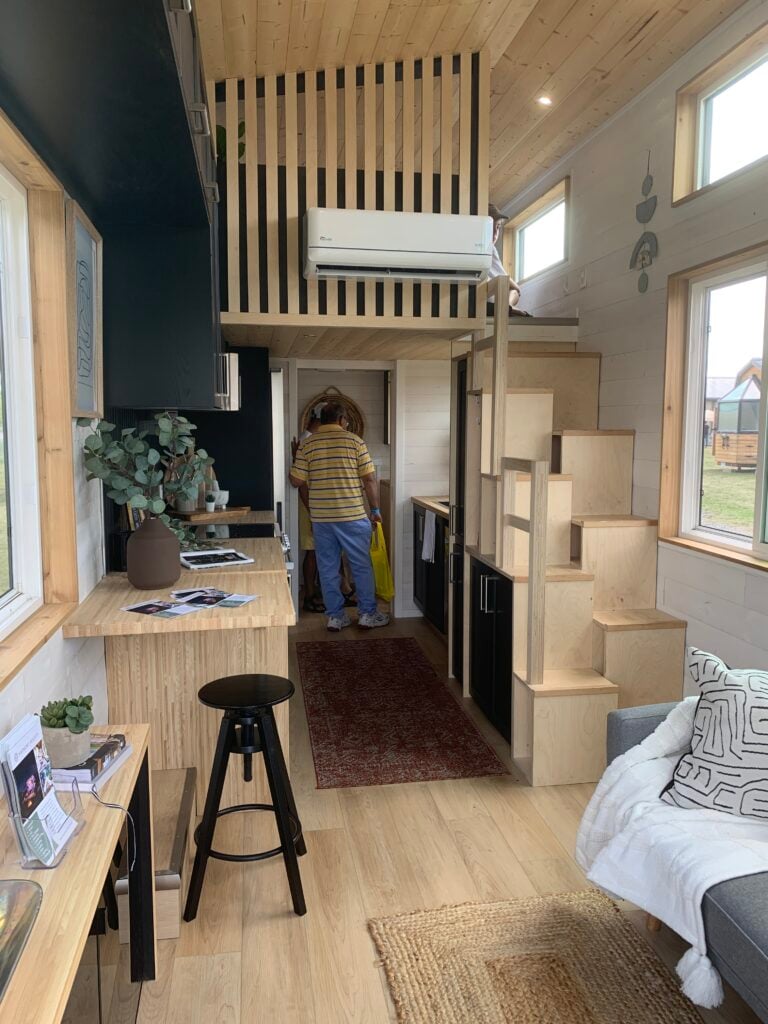
- Costs much less than traditional home construction.
- Easy and low-cost maintenance. (Due better appliances like washers, dryers, stoves and fridges)
- Higher sustainability (via composting toilets, efficient water usage)
- Passive earnings through seasonal renting.
- Higher movability.
It may be difficult to outfit it with modern and high-tech amenities such as weather-resistant features, renewable energy sources, a suitable interior, the best suitable furniture, and so on. The task requires professional interventions in the planning, designing, selection of interior components, fabricating, and installation processes. We’ve found some of the best tiny home builders in the US who currently offer their services in Virginia. We detailed their expertise and the uniqueness of their offerings.
1. Tiny House Building Company
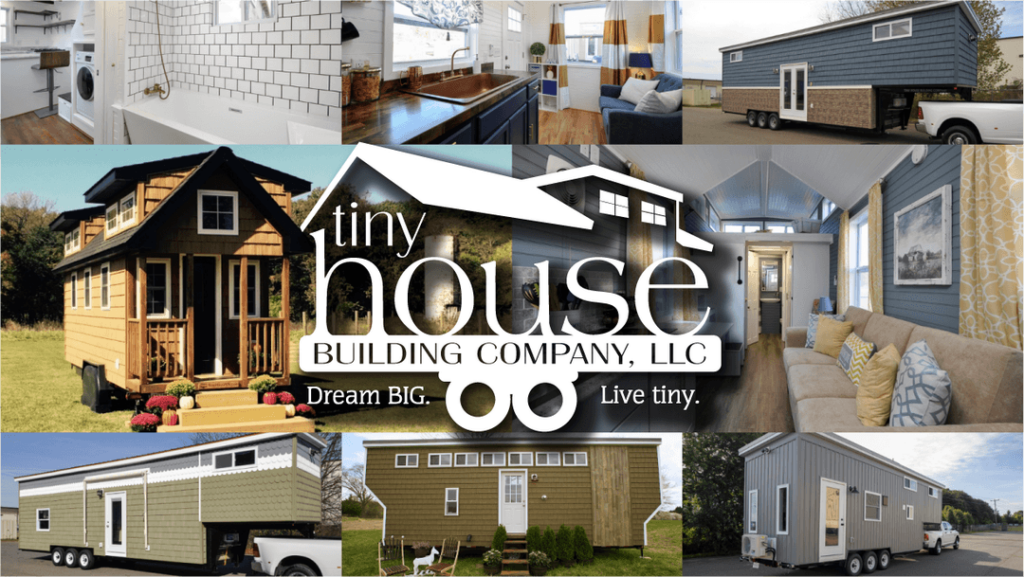
They share a nice vision: “Dream Big, Live Tiny.” The Tiny House Building Company is a prominent one with experienced and highly skilled team members, 24/7 contact options, and a financial assistance facility through Liberty Bank. The price ranges from $60,000 to $150,000.
Address: 11001 Houser Drive, Suite 16, Fredericksburg, Virginia 2248.
Favors
- Offers numerous costume-built options with various specs.
- Open house days are held 2-4 times per month.
- House tours are arranged promptly.
Disfavors
- Doesn’t allow walk-ins. Appointments are necessary.
2. Arlington Designer Homes
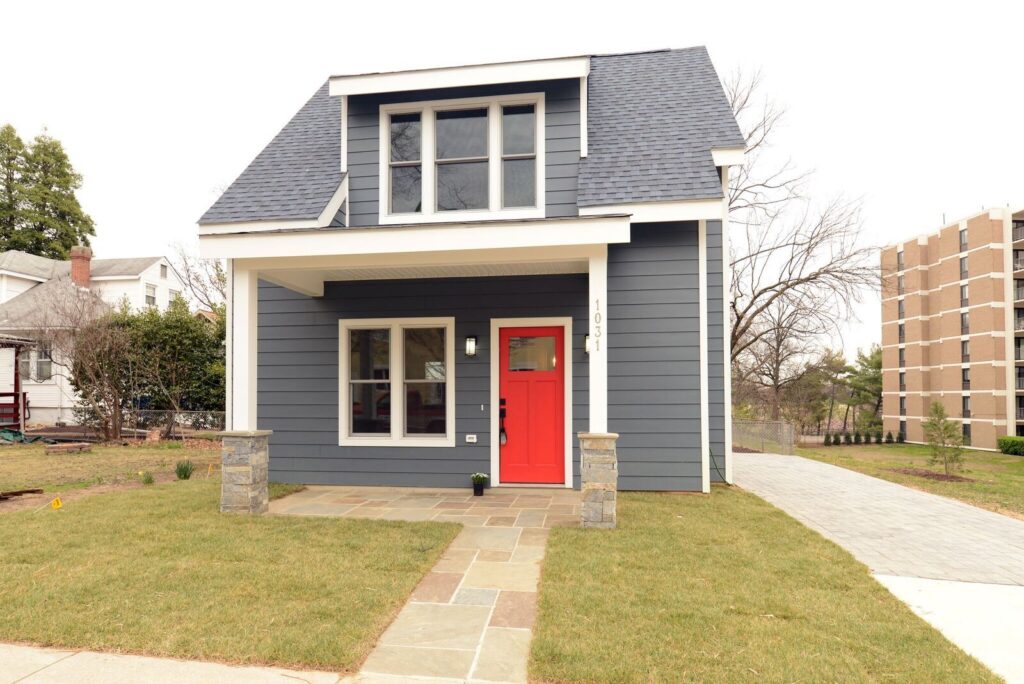
This tiny home builder is rated HERS 62 and recognized as “green” by the Arlington County Green Home Choice Program. They are comparatively new in this construction category, with more than 30 years of experience in house construction. They will charge you between $250 and $387per square footage covering.
Address: Arlington Designer Homes, 4719 24th Rd N, Arlington VA 22207.
Favors
- Work completion occurs within 120 to 160 days.
- Less wood uses in the tiny house model – higher insulation efficiency.
- Highly concerned about the state’s real estate rules and regulations.
- Responses with solid consultation within 24 hours.
Disfavors
- Their offerings are more likely to go above 500 sqft.
- Not that suitable if you have a low budget.
3. Build Tiny
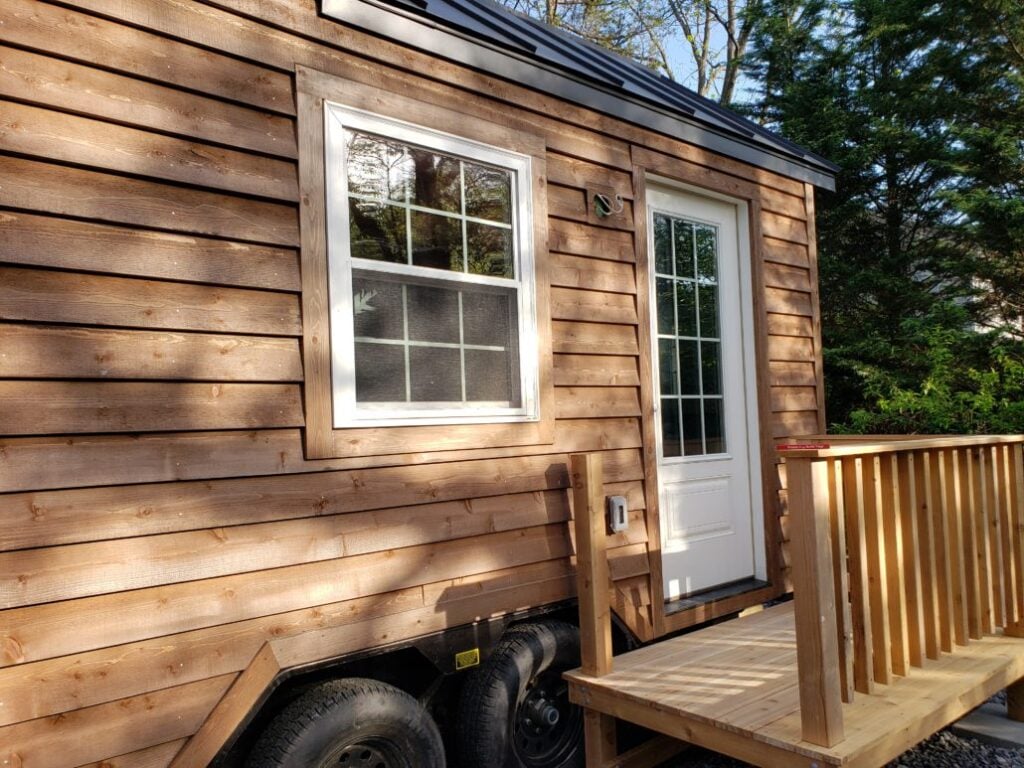
Build Tiny works closely with clients, having continuous consultations throughout the whole building process- making house plans to choice of energy source. Besides custom-design offerings, this builder has many ready-to-sale tiny home models. In general, the minimum price of a ready-made option is $30,000, and the maximum is $65,000.
Address: Berryville, Clarke County, Virginia.
Favors
- Ready-to-sale offers are applied for both fixed foundation and on-wheel options.
- Pricing covers connections for water, electricity, and other utilities.
- Higher sustainability.
- Highly concerned about building codes.
Disfavors
- Financing is not available.
- Custom home construction takes longer.
4. Bayside Tiny Homes
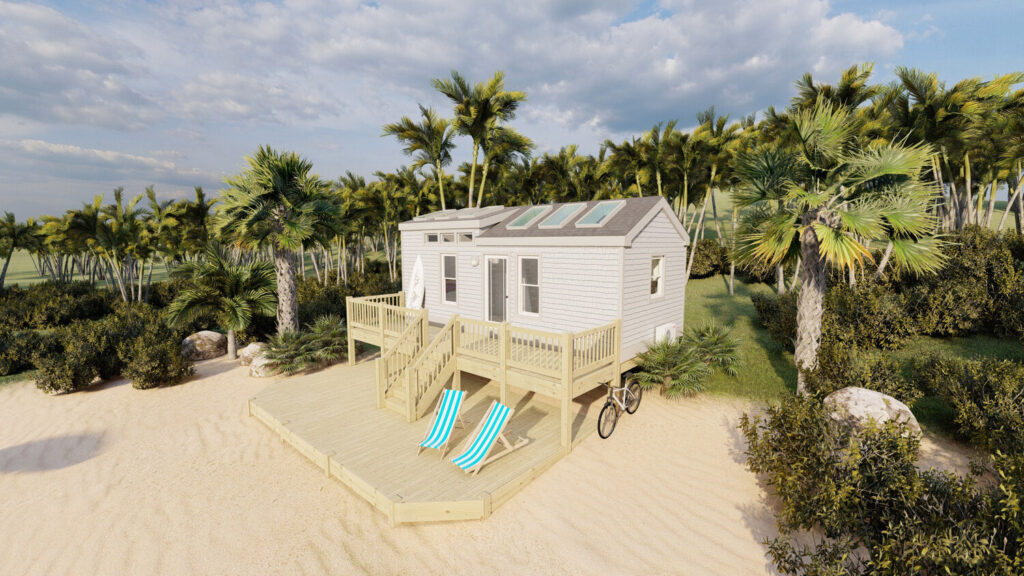
The company is a wing of Bayside Joinery Co., LLC., specializing in waterfront house building. They build tiny homes on solid foundations. During the off-grid’s building process, they assemble the entire house in their workshop and transport it to the installation site. Bayside Tiny Homes offers various models. You can calculate $50,000 to $105,000 for a coverage area of 160 to 364 sq ft, respectively.
Address: Bayside Joinery Co., 61 Cobbs Creek Lane, Cobbs Creek, VA 23035
Favors
- They can fit a duplex structure within 364sqft only.
- There is no need for additional storage space for construction materials.
- Eco-friendly solutions.
- Combine nature and modern living.
Disfavors
- Choice of building materials is limited.
- Transferring from wheels to a fixed base challenges patience.
Kaufman Trailers
Kaufman Trailers is your best option if you want a tiny house on wheels. Their motto is to provide “Rugged & Reliable” home-building solutions within affordable limits. With over 30 years of experience, they offer high-quality, energy-efficient, and cost-effective tiny house trailers.
Address: They don’t have a physical address in Virginia. The headquarter is located at 702 N Silver St, Lexington, North Carolina 27292.
Favors
- They assist you in building your own tiny house.
- Kaufman Trailers has a designated financial department.
- 24/7 support service.
- Meets deadlines.
Disfavors
- Kaufman Trailers doesn’t offer a full package.
Some facts you should know before going for a little living solution. Living long-term in an area of less than 500 square feet is not suitable for a family. If your family exceeds two members, it is better to purchase a modular home as your second or vacational home. YES! It is obvious that you are fascinated by the thriving economy of Virginia and highly motivated to take advantage of soaring real estate. Numerous top-notch properties are running empty in Arlington’s Bluemont, Chantilly’s South Riding, Norfolk’s Williamsburg, Chesapeake’s Virginia Beach, and Loudoun’s Leesburg. In these locations, a 2-bedroom, 2-bath living space with a garage can cost you around $210,000 to $449,000. So why not have a house to offer your family more space while renting out your tiny living solution to make some bucks in cash.
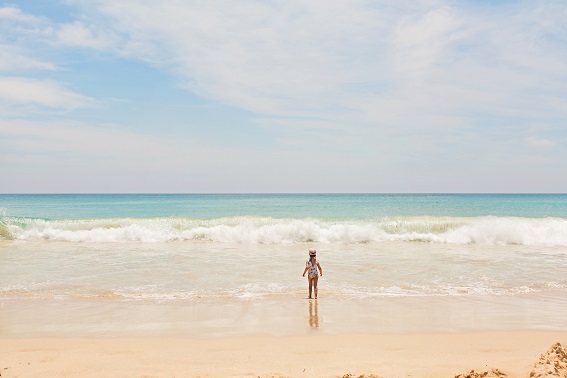
Tiny Homes On The Beach – How can you find one?
Ready to buy a beachfront house? Thinking about a place to spend your vacation while making some ROI in cash? If that’s the case, you’re probably fantasizing about having a larger mansion with a pool, a garden, a short walk to the beach, and so on.
Note: If you’re not interested in building your own garden outdoors – consider trying tower gardens as an alternative. We’ve written a review and are documenting our tower garden experience.
Think carefully when owning a a large rental property, as it means more work, more maintenance and potential issues down the road. It can overwhelm you by various means: discontinuous earning; huge demands on effort, money, and time; continuous observation or a permanent caretaker; a higher mortgage rate and taxation.
However, if you’re looking for something more low maintenance, we have the answer for you – a tiny beach house. YES! A tiny home on the beach can also serve as your choice for a larger property. Here are the benefits of owning a small beach home instead of a mansion:
- Requires less investing amount.
- Can be used for own vacation or permanent living place.
- Higher chance of continuous and consistent earning by renting to tourists.
- A high possibility of permanent renters, not just “AirBnBers” .
- Low maintenance costs and yearly full maintenance are sufficient to keep the property in good condition.
- Low power consumption and related expenses.
Deciding to Purchase A Small Beach Home

It is now clear that a tiny beach house, like a mansion, can provide monetary gains. The lower amount of monthly earnings can be a concern, but the investment is also lower, and there are other advantages as well. The small holiday home allows for chilling with family while exploring the surrounding natural beauties. This ocean living space can easily accommodate amenities like kitchens, multiple bathrooms, storage, hot tub, and living room facilities.
Influencing Factors
To select the best tiny home on the beach, several undeniable factors are intertwined with the decision-making process:
Location
It is a dream for everyone to have a living space..to wake up to the rhythmic sound of water playing at the shore to see the sunrises…to pass the whole day observing the changing hues. This dream getaway is also equipped with an escape from the city’s dirt, noise, and mud. It requires a jackpot of greeneries, water spots, natural tracks, and so on to feed humans’ primal nature — “exploration.” By logic, to remain in modern civilization, updated amenities, technological inclusion, and easy accessibility to cities are essential. As a result, location is at the top of the list of consideration factors.
Affordability
Affordability is also a significant concern in the whole decision-making process. Prices vary according to the hotness of the location and in-house facilities like wifi, renewable power features, advanced air conditioning, etc. The following resources will provide you with an overview of housing prices and earning potentials.
High-price Options
In general, a high-stakes purchase can cost you around $330,800, which usually comes with a vast open space. This option is basically a miniature version of a large mansion, equipped with ultra-modern automatic facilities, a spacious living room, and a higher degree of privacy. However, purchasing such property is not a good investment if you are highly concerned about earning from tourist rentals. Because of the high rent, the monetary gain from the rental option will be disrupted. The house will surely run empty in the off-peak season and probably be less occupied in the peak season. Hence, the investment and tax implications are huge for this kind of property.
Mid-price options
A mid-range tiny home beside the sea will cost you approximately $200,000. You can get a small pool and the associated privacy within this budget. Also, the offered amenities are suitable for fulfilling modern living needs. Mid-budget houses on the beach come with higher rental options than high-steak houses. It can generate $800 to $1,500 per month in rental income in addition to serving as your vacation destination. Still, this choice is restricted only to the allocation of large families with more than 6 to 10 members. Following that, there is a significant possibility of generating less revenue from tourist or corporate rentals. Businesspersons or workers who are alone and want to live near the beach to work at small business establishments will never go for this option.
Low-price options
Investing $50,000 to $120,000 and having a monthly ROI of $300 to $700 sounds great. Actually, it is! It can ensure your family’s healthy living on a permanent basis at the destination. It is also feasible and worth using as a vacation living solution. The small beach homes reject the concept of having larger properties on the beach. The associated inclusion of gardens, pools, etc. is worthless as the surrounding nature is already offering those in a more natural and wild way. Most importantly, due to the lower rental price, the tiny house solutions never run empty.
Weather
The weather plays a vital role in selecting a beach house. Highly corrosive wind and water reduce the life expectancy of the home. Also, beach destinations with higher humidity are not that preferable for tourists or for people living permanently with family. In association with an appropriate floor plan, a less corrosive weathering condition with less humidity and nearly consistent climatic components is highly desirable. Before making a final purchasing decision, researching a location’s weather is a must-do thing. In short, your ideal home must be weather-resistant.
Neighborhood
Having a friendly and safe neighborhood is always a high priority, whether you are permanently living in a tourist destination or going for a combination of living and renting to others. So, it is better to stroll around the neighborhood, talk with the neighbors, spend some nights in the locality, and scroll through the crime rates before purchasing a tiny cottage.
Short Listing the Properties
Finding your tiny beach house by plotting all the above-mentioned factors and combining them is a professional task. You must conduct extensive research on each factor mentioned. Also, consulting a property agent can be beneficial.
We’ve conducted deep research to find some of the best combinations.
San Diego, California
It is an ideal location for beachgoers. This city offers a dazzling array of amazing attractions for small and large families. The must-mention attractions include the San Diego Zoo and Safari Park, LEGOLAND California, and SeaWorld. Nice weather and a 70-mile-long sand beach aimed to provide tourists with a once-in-a-lifetime experience. In addition, San Diego’s higher capability to meet artistic needs is observable through the art galleries, museums, art studios displaying master craftsman works, and themed restaurants.
The median price of a tiny ocean-view house in San Diego ranges from $170,000 to $25,000. By paying this amount, you can get two bedrooms, one bathroom, and a covered area of 480 sq ft.
Ocean City, Maryland
It is already highly recognized as a resort city and a top choice among tourists. Great weather, mind-blowing landscaping, affordable living costs, etc.—every component of a better living place is available here. It features white sand beaches along the azure water, and a bunch of restaurants, shops, and hotels are lined beside a wooden boardwalk.
You can buy a tiny beach house in this very location within your budget without breaking the bank. This place offers a wide variety of beach houses, which can be used for your own living or rented to others. White St., Coastal Hwy, Kelly Road, Trimper Ave. Bayshore, and 76th St. are some of the best communities in Ocean City, Maryland, to purchase a mid-range to a low-range house. A 350–450 sq ft home with 1 bed and 1 bath in these areas can cost between $80,000 and $289,900. Still, if your budget is high, you can get a modern, updated, and larger space by spending more than $350,000.
Rockport, Texas
This Gulf Coast location is ornamented with clean beaches, a healthy environment, nice weather, fantastic fishing, and so on. This selection comes from modern life in the wild, a favorite destination for ornithologists.
Small waterfront houses range from $90,000 to $150,000. Through rental, you may earn up to $300 per month in June, July, and August.
Deerfield Beach, Florida
This amazing destination offers some amazing waterfront options. Some areas of Deerfield Beach offer small beach homes for less than $250,000. In particular, homes within 500 sqft in Durham Circle F and Tilford T can cost you around $105,000.
It is located halfway between Palm Beach and Miami. In association with breathtaking natural beauty, you can also enjoy fresh food and a happening neighborhood.
Purchasing a tiny beach house is not just a property purchase; you are buying your dream. Determine your budget first, and then choose a specific location. After selecting the desired living place, in-depth research is needed on various matters, such as weather, available small housing, mortgage advantages, tax deduction options, neighborhood condition, and so on. Based on the prepared shortlisting, perform a physical visit to every property and consult with local agents. Most importantly, if you have decided to use the home for generating passive income, studying city development and economy-related documents and reports is a must-do task.
Wrapping up, beach cottages have higher market demand. Customers are always willing to deal with less than 600-square-foot properties, creating the possibility of earning more than the amount spent.
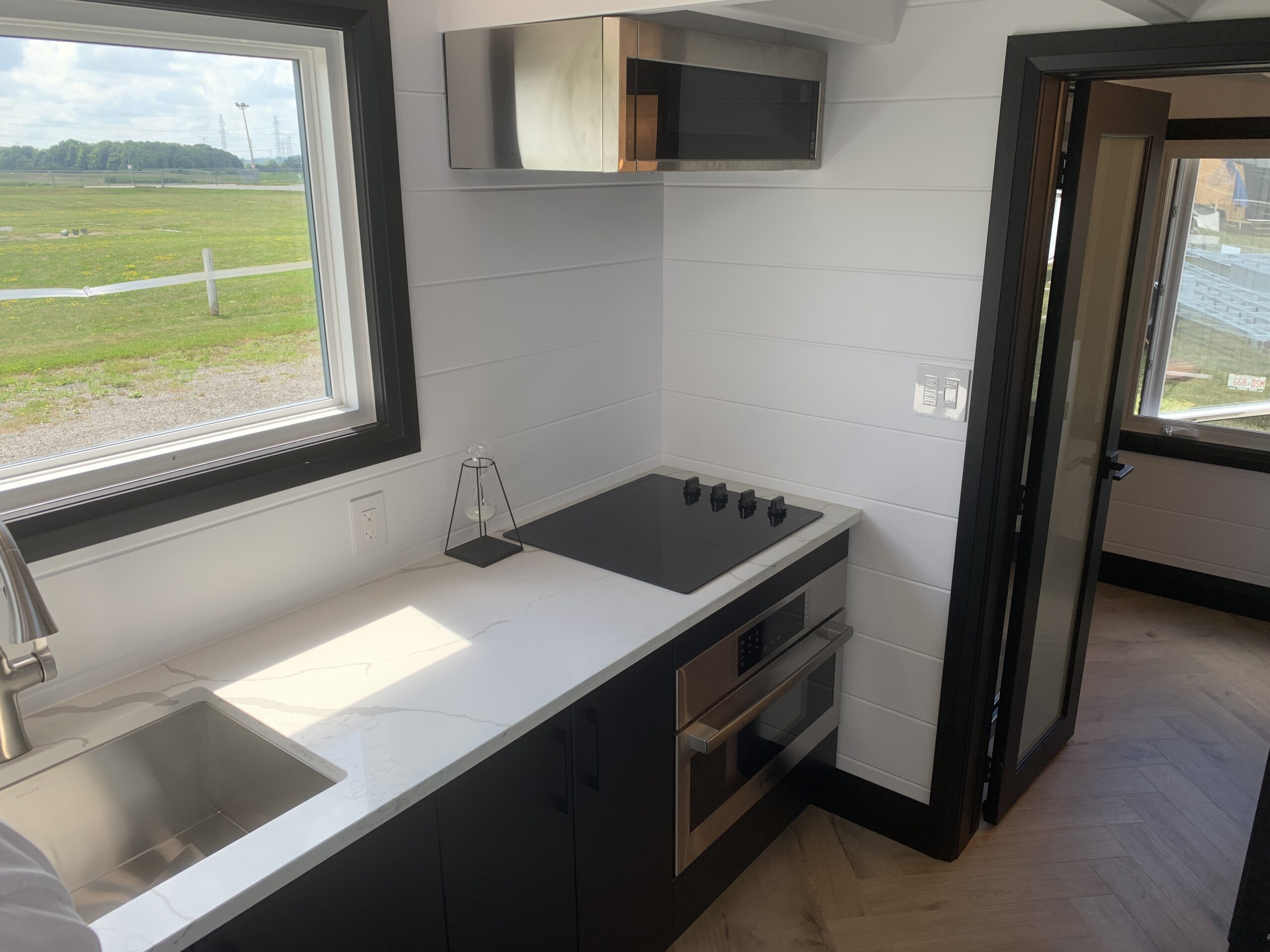
Tiny Home Maintenance Checklist by Month
Being a homeowner or homeownership entails a lot of responsibility and staying on top of all the maintenance-related responsibilities can be difficult. However, preventive maintenance of a few important locations around your house can save you money on costly repairs. Most people do not know the home maintenance checklist by month to use in preserving their home.
Performing home maintenance tasks or plans is crucial for preserving every home. Regular maintenance and inspections of your home’s exterior, furnishings, HVAC, plumbing, safety, and power components will help you avoid malfunctions, save money, improve energy efficiency, and maintain your property. Schedule your seasonal changes, repairs, checkups, and a few more monthly duties using this house maintenance checklist.
To keep your house in top operating order, go over the monthly home maintenance checklist at the start of each new season. Consider employing a home maintenance company to assist you if any house repairs and upkeep require skills beyond your scope or result in more challenging undertakings. Nothing is wrong if you decide to do the home repairs or tune-up yourself after watching DIY videos.
Home Maintenance Checklist by Month
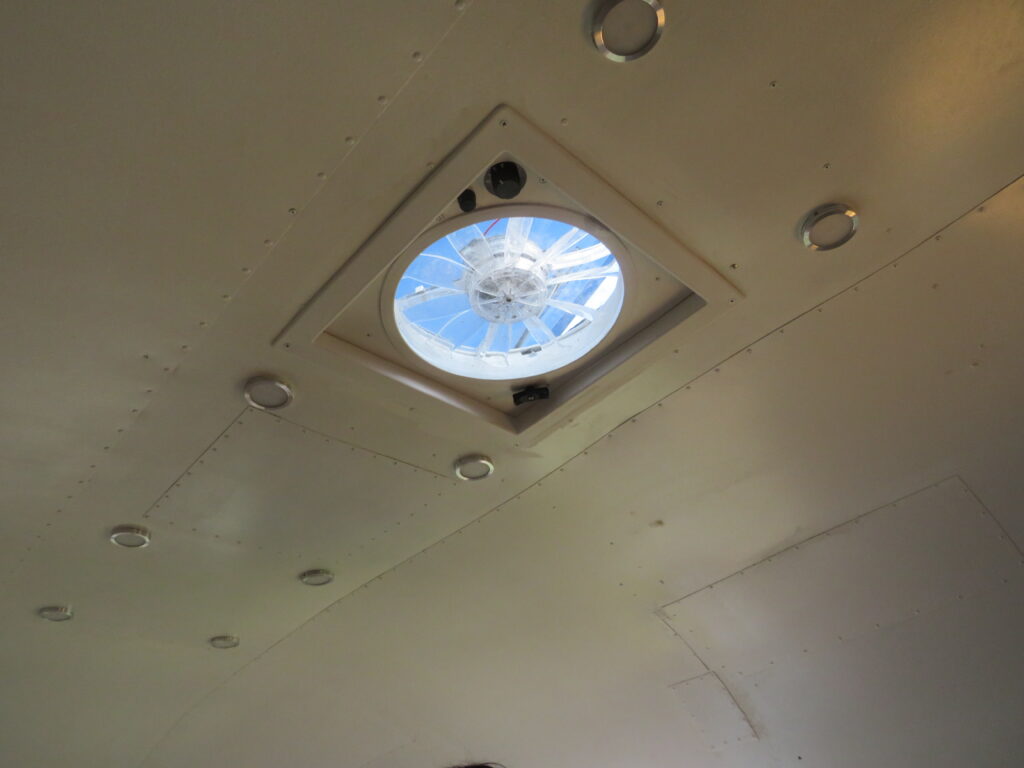
Let us begin with some regular touch up or upkeep you can do in your home. These can, of course, be performed whenever you like, but we recommend that you do so at least once every month.
Check the fire and security equipment and get supplies
Make sure your house is secure, and every supply is available in case of a thunderstorm or other situation that results in a power outage. Make sure your security system is operational by testing it. A sound sprinkler system is not a bad option if you have the resources.
To ensure they are prepared for an emergency, test and replace the batteries in your smoke and carbon monoxide detectors and look at the expiry date on your fire extinguishers. Setting smoke alarms or smoke detectors can help protect your home from an unplanned event.
Keep your appliances and kitchen clean
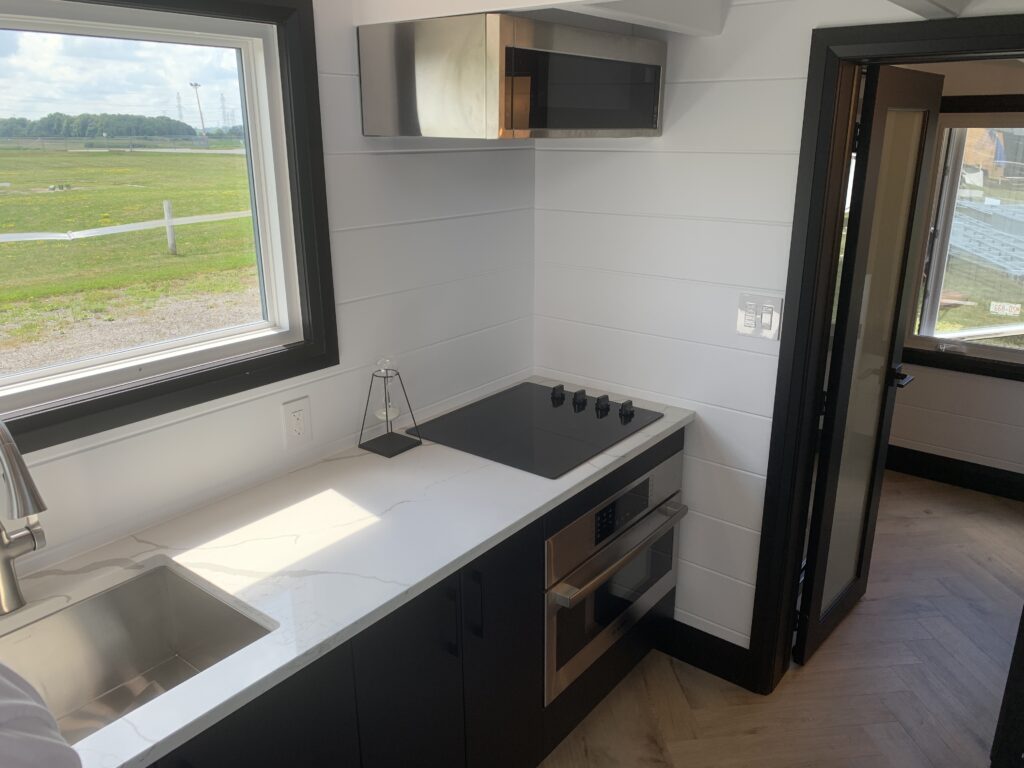
The kitchen is often the room in the house where individuals devote the most time. Your floors and worktops may eventually become stained or damaged because of spilled liquids and foods from preparing, cooking, and serving meals. Spend time cleaning cabinets and removing expired products from your pantry every month.
To prevent clogs or leaky areas, deep clean your dishwasher following the manufacturer’s instructions and change water and air filters as needed. Inspect the hose linking the refrigerator coils and the wall if it has an ice maker or hot water dispenser to see if it is pinched or stressed. Observe for wear and tear or leakage as well. You should also check grout and grime around any hoses as well – since wear and tear may cause erosion.
Maintain Your Landscaping
Plan to attend to the flowerbeds monthly as part of your home maintenance checklist in the warmer months. Occasionally, allowing weeds to grow unchecked or dead leaves and other garbage to accumulate, like in flower beds, might endanger your property.
These conditions can draw pests or termites and even provide a fire risk. To keep things neat and aid in avoiding harmful pests, think about setting aside some time each month for landscaping maintenance and trimming.
Do not forget to rake leaves and other yard waste. To avoid mold growth and harm to your lawn, remove leaves and debris from it. You can use the garbage disposal to take them away or use them as mulch in garden beds to stimulate landscaping. Don’t forget to use a sump pump for a basement that contains water.
Inspect Gutters
Rain and snowmelt are directed away from your property by gutters and downspouts, reducing the chance of waterlogging. Look for debris such as leaves or other blockages in your gutters, then clear out any clogs or poor drainage.
For assistance with cleaning gutters or fixing any damage, contact a professional. As part of regular fall home maintenance, this may become especially crucial because falling leaves might pile up in your gutters.
Keep an eye on your plumbing system
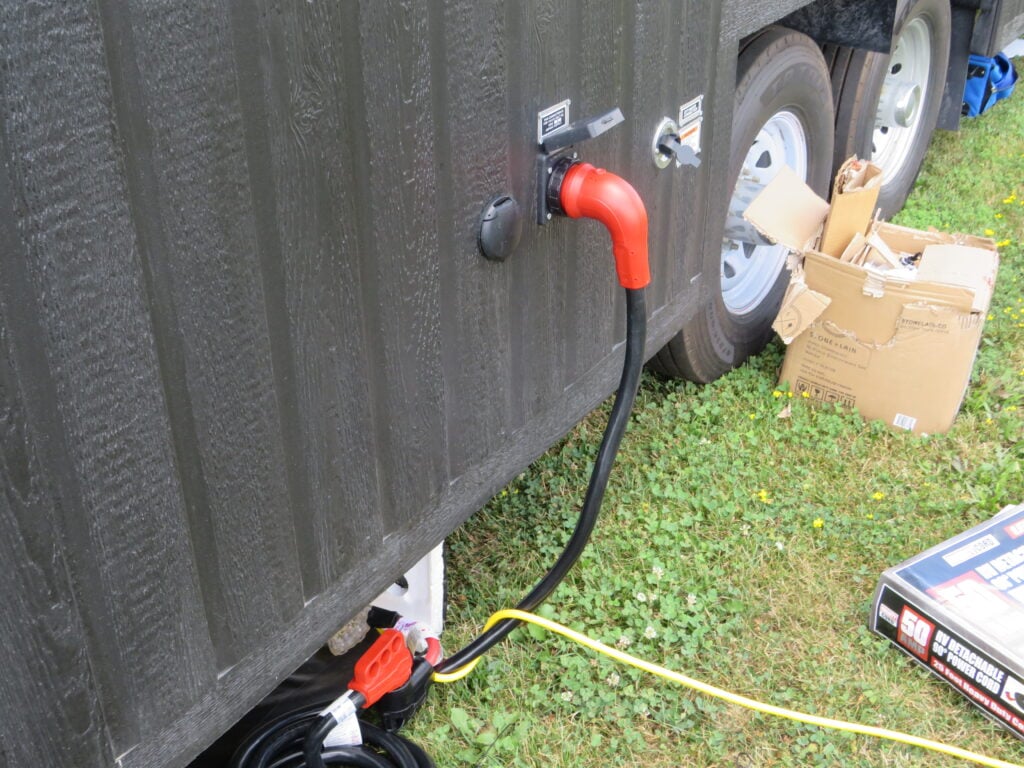
Regular plumbing system inspections should be a key component of your home upkeep.
This also includes any type of water sanitation or composting toilets.
Visually assess the area and search for damage indicators. These include rust-like buildup, deposits, frayed metal, and discoloration on woven supply hoses. They can also include items such as discoloration on metal pipes, plastic, or polymer part breaking or crimping.
Consider changing the item or contacting a specialist for help if you notice any of these
problems in advance. Clean slow-moving drains as necessary to help avoid a significant backup.
Ensure the showerheads are not left open or toilets running continuously because doing so can cause water damage to your property. In addition, it will waste water and cost you more.
Check HVAC Systems
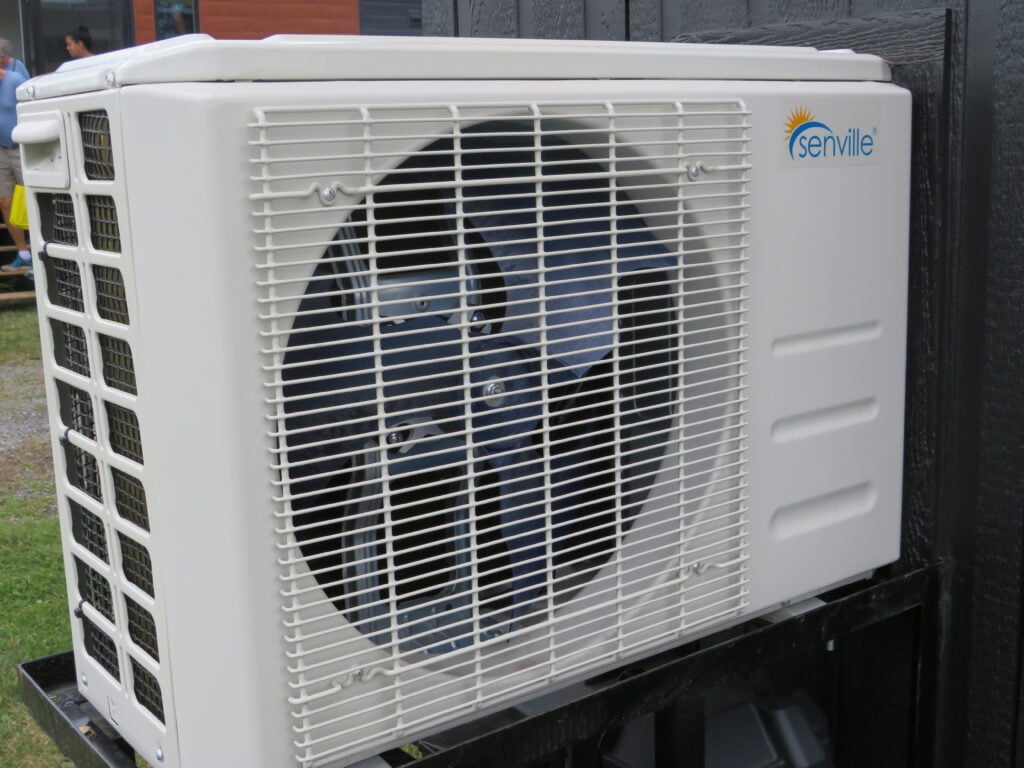
It is a good idea to inspect your home’s larger systems for potential issues, even if you do not have a monthly home maintenance culture. Pay close attention to your HVAC filters during the winter months as it can help reduce energy bills.
To improve indoor air quality, replace clogged filters to make the water heater or heating system function more effectively. Turn off your outside faucets as winter arrives and think about powder coating your water system. Ensure you perform routine air conditioner maintenance to help with your home improvement checklist and HVAC system.
Clean damp places
If you lack ventilation, mold and mildew can grow in showers, toilets, and other wet parts of your home. At least once a month to help prevent mold or mildew growth, scrub tubs, bathroom tiling, and floors with your favorite cleaning agent at least once a month.
When cleaning, follow the manufacturer’s directions and allow enough airflow. Check the pipes and fixtures for any indications of wear or corrosion, such as leaks, browning, or other changes.
Examine the caulking around the sink, toilet, shower, and bathtub bases, and fix it as necessary.
In addition, if you live in an area prone to snow, you can hire a chimney sweep to keep your environment clean. Remember the spring cleaning process will be different from the winter period. Therefore, keep your air conditioner in perfect condition.
Do you have a range hood for your stove? If you don’t it may be good to get one. This will reduce a build of cooking from steam.
Window and door inspection and insulation
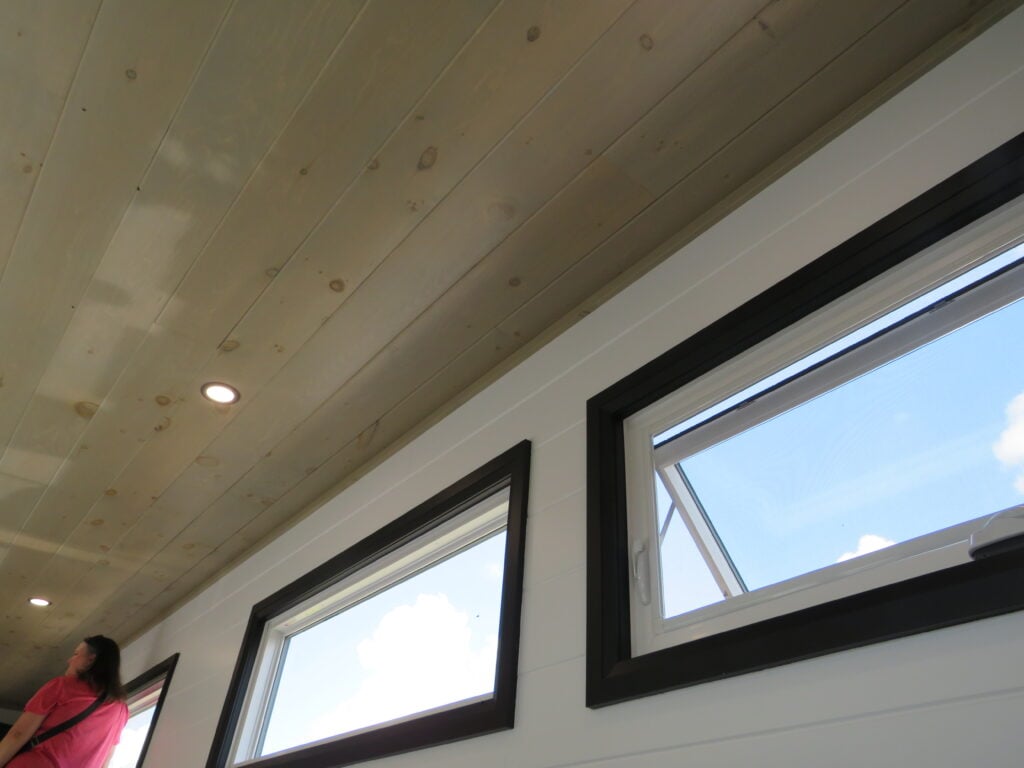
Make sure all the windows and doors in your home open and close quickly by walking around the exterior. Make any necessary repairs after checking for air leaks or damage. To stop heat loss, use insulation or weatherstripping. Having window screens, or dual paneled windows (although expensive) can provide that necessary insulation from the weather and sound.
You can also check your garage door for any leaks.
Clean the dryer vent
Although you can do this yearly, it does not cost anything if you add this to your tiny home maintenance checklist by month. Hire a professional to check and clean the dryer vents in your laundry. In addition to being a fire hazard, clogged dryer vents with lint can harm your machine and decrease performance.
Keep Your Home Inventory Up to Date
For insurance reasons, you should upgrade your home supplies if you remodel your living area or make sizable purchases of furniture or equipment. Contact your insurance agent to discuss renewing your homeowners’ policy. Save receipts and snap photos of any purchases.
One strategy to save money is to complete monthly and yearly house maintenance duties.
Otherwise, costly issues may arise because of carelessness. Your homeowners’ insurance might aid in offering protection against unanticipated accidents or other occurrences.
Conclusion
You need a tiny home maintenance checklist by month to improve the overall beauty of your home. The upkeep of your home is crucial. It helps maintain the value of your house by spotting problems before expensive repairs are required. Take advantage of the spring-cleaning period to increase your home value.
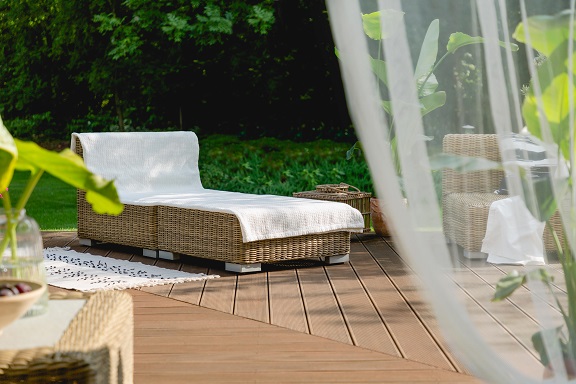
Chaise Lounge Dimensions – The sizing truth about these chairs
Chaise lounge is the most comfortable chair for relaxation or taking a short nap. Unlike couches or reclining armchairs, chaise lounge chairs have an angular back that provides full-body support.
In some cases, the angular back can be adjusted depending on the user’s preference. Chaise lounges are usually designed to be low to the ground, so their dimensions will vary depending on other outdoor furniture and indoor positions. For that, knowing the length and width of a chaise lounge is imperative when choosing one. A chaise lounge is actually a perfect edition to a tiny house living room, or even makes a good Ottoman chair at the edge of your bed.
Typically, the average length of a chaise lounge is between 73 and 80 inches and 25 to 30 inches in width. To explore more details about the length and width of chaise lounges, keep reading on reading this article while we dive into the world of chaise lounge dimensions :).
What Is The Purpose Of Using A Chaise Lounge?
Chaise lounges are very comfortable and an ideal alternative to traditional furniture like sofas, coffee tables, chairs, etc. Their shape and stylish design make them more attractive and relaxing. For that, they can help a small room feel larger, especially if you have a small room. This is especially handy for those with smaller floor plans but large living rooms.
Typically, traditional sofas don’t evenly support your body, especially when lying on the stomach. In that case, having the best lounge chair for laying on the stomach will help you to get maximum relaxation. Although lying on your stomach may bring some drawbacks, you can’t ignore its advantages.
For example, sleeping in a chaise lounge on your stomach can reduce the risk of snoring and sleep apnea. Another good thing is you can set up a chaise lounge in front of focal points such as a fireplace, window, or in front of an archway. This is because the chaise lounge is low to the ground and doesn’t interrupt sightlines.
How Long And How Wide Is A Chaise Lounge?
There are different types of chaise lounges like double, three seats, and standard size. Here we have explored the dimension details of these chaise lounges.
Standard Chaise Lounge
The standard chaise lounge is like a regular chair style. It enables the person to sit on the chaise to stretch and lean in the lounge position. These chairs are designed to be close to the ground and support the entire body. For that, standard lounges vary in different shapes and sizes. The seat lengths of these chairs range from 73 to 80 inches, while the width ranges from 25 to 30 inches.
Indoor Chaise Lounge
The indoor chaise lounge is made from comfortable materials, similar to a sofa. In this chair, two people can sit comfortably. There are many types of indoor chaise lounge available on the market, and their dimension differs from design to design. The lengths of this chair range from 73 to 80 inches, and the widths range from 25 to 30 inches. The wideness of this chair enables the arm to rest comfortably, due to the added armrest.
Double Chaise Lounge
This chaise lounge allows you to sit with two to even three people. It offers a perfect seat to lay back on while reading books or watching television. The good thing is the double chaise lounge comes in many styles and shapes. The average length of a double chaise lounge is 90.5 inches.
Outdoor Chaise Lounge
Compared to the indoor, outdoor chaise lounges are equipped with an adjustable backrest. This type of chaise lounge is usually found at the beach or poolside. The outdoor chaise lounge comes in different designs. The regular outdoor chaise lounges have dimensions of 78 inches long and 20.5 inches wide. The seat height from the floor of this chair is around 13 inches. These are typically weather-resistant and function more as patio furniture. Many of the outdoor chaise loungers will have people laying by the pool sunbathing.
Pool Chaise Lounge
These types of chaise lounges are similar to the standard outdoor chaises. They are equipped with an angled back to support the entire body. The pool chaise lounge could be a good choice for those who have mobility problems. The dimension length of a standard pool chaise lounge is 78.5 inches and 98 inches when fully reclined. Additionally, the depth of this chair is around 27 inches, with 39 inches in height.
Different Chaise Lounges Styles

There are five different styles of chaise lounges you will find on the market: chair, bench sofa, Victorian, French, and contemporary. Below we have demonstrated these chaise lounge styles.
Chaise Lounge Chair
Chaise lounge chairs are designed with a seat shape to support your legs. They also have adjustable backs to allow you to raise or lower the elevation angle. The average length of this chair is 64 inches, with 29 inches in width.
Bench Sofa
Bench sofa chaise lounge comes in various styles. The most common style of this chaise lounge is similar to a daybed. These sofas are usually wider than chaise lounge chairs. Additionally, the bench sofa has a rectangular structure without cushions and high ends on both sides.
Victorian Chaise Lounge
Victorian chaise lounges are the most common chaise lounges. The base, legs, and woodwork all feature ornate details and sculpted designs are added in this style. This chaise lounge is usually 66 inches in length with 29 inches in width.
French Chaise Lounge
These chaise lounges have an asymmetrical design with a sloping back, low footrest, and high headrest. Wealthy French men widely used this style. Typically, the French chaise lounge features ornate woodwork, high-quality fabrics, and tufting.
Contemporary Chaise Lounge
Contemporary chaise lounges are entirely different from other chaise lounges. These chairs feature a geometric design that makes them more appealing. Besides, metal accents and non-traditional color schemes are usually added to this style. The overall height of this chaise is 37.5 inches with 23.5 inches in width.
How To Measure A Chaise Lounge?
You may have two reasons for measuring your chaise lounge. The first is measuring the chaise to fit a cover, and the second one is for the cushion. To measure your chaise lounge, you will need a measuring tape.
- First, you need to measure the height of the chaise lounge from top to bottom.
- After that, you have to measure the depth of the chaise lounge. To do this, measure the deepest side from top to bottom and simplify it by measuring from front to back.
- Finally, measure the width of the chaise lounge from side to side and from left to right.
Things To Consider While Buying Chaise Lounges Chairs
Buying the wrong chaise lounge chair will cost you money, trust, and time. We have demonstrated some crucial factors to consider while purchasing chaise lounge chairs to avoid such disappointments.
Quality
The quality of a chaise lounge chair depends on its construction. If the chair is constructed with good materials, it will last for a long time. The cushion used in the chaise lounge should be of good quality that doesn’t dent quickly. Additionally, the chair’s upholstery has been hard enough not to wear out quickly. I’d look for a chair with a fine microfiber, and a wide seat width.
Weight
It is best to choose a lightweight chaise lounge if you wish to move your chaise lounge around. Typically, the weight of chaise lounges varies according to the materials used in the construction. You may find some chairs made with hardwood while others with metals or other materials. So, you should keep in mind the durability and weight while purchasing a chaise lounge.
Affordability
Not any brand or company may offer a lifetime limited warranty with a chaise lounge. So, you should choose a chaise lounge that will be comfortable to afford and provide a specific warranty time. You will also find some brands that offer buy one, get one free. In that case, you should pay deep attention to the chaise lounge’s quality.
Purpose
The purpose of buying a chaise lounge is one of the prime considerations. Someone may be looking at this chair for reading and relaxing while others may sunbathe or sleep. Chaise lounges are designed with different features according to using purposes. For example, you may need a chaise lounge with comfortable arms for reading or relaxing.
Miscellaneous
Always consider add-ons as well when buying a chaise lounge. The quality of the seat cushion, whether it comes with a side table or even storage space within the body can make all of the difference. Occasionally on big box stories like Lowes and Home depot, they’ll sell the chaise lounge with a footstool.
Conclusion
Chaise lounges come in different styles for using different purposes. The length and width vary from style to style for their numerous designs. We have tried to provide an in-depth idea about chaise lounge length and width. Typically, the dimension of these chairs completely depends on whether it is an indoor, outdoor, double, or pool chaise lounge.
However, the overall length of a chaise lounge is between 73 and 80 inches, and the width range is 25 to 30 inches. With this range, you will find different styles of chaise lounges in the market. If you find any complications finding the best chaise lounge, check out the section above. Here we will find some crucial factors to consider while buying a chaise lounge.